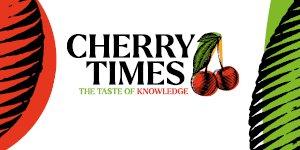In Germany, summer is traditionally the season for berries! Although this is still true for the German season, consumption has spread throughout the year due to imports. In some cases, even the main purchasing stages for certain types of berries have shifted. What does this mean for raspberries?
Raspberry purchases have in some cases shown huge upward leaps in recent years. For example, the volume of private household purchases has more than doubled since 2016. However, growth from 2019 to 2020 was significantly lower (+8%) bringing raspberry consumption to 538g per household.
However, the first five months of 2021 showed a 14% drop compared to the same period last year, and purchases were also down 2% compared to the same period in 2019 in the months of January to May 2021. One reason for the downward trend over the period is likely to have been thecold spell earlier in the year in Spain, which also caused yield losses and ultimately higher prices in the Huelva region, the country's main growing area. With 10,600 tonnes, Spain accounted for 28% of Germany's total imports in 2020. Due to the large share of imports from Morocco and Spain, the main purchase volumes are concentrated in April and May. The summer months with harvesting in Germany continue to show high purchase volumes, but are no longer as relevant as they once were. Other countries of origin meanwhile ensure year-round availability.

MORE FAMILIES BOUGHT BERRIES
Year-round availability has also led to more households buying raspberries in recent years. Buyer penetration (number of households buying throughout the year) has increased from 26% in 2016 to over 41% in 2020, although when looking at the period from June 2020 to May 2021, the trend is slightly downwards (-0.3%) due to lower volumes and high prices. However, not only did the number of households buying raspberries increase until the most recent phase of decline, but the number of purchases also increased until then.
As a result, the amount purchased by purchasing households also increased to 1.3 kg in the 2019/2020 observation period. More recently, however, a decline is seen to 1.23 kg.
The quantity per purchase was relatively constant at around 200 g in the past observation periods. In previous years, it was considerably higher due to the higher proportion of German products, which were more frequently offered in 250 g trays at that time.

THE LARGE-SCALE RETAIL TRADE IS THE MAIN PLACE OF PURCHASE
With a share of 86%, raspberries were mainly bought in supermarkets. This figure is between blueberries (94%) and strawberries (74%).
The share of supermarkets with 45 percent exceeds that of discounters with 41 percent. For blueberries and strawberries, however, the market share of discounters is higher. Raspberries are thus more similar to the structure of blackberries. The share of non-GDO stores is almost halfway between blueberries and strawberries, around 14%.
Weekly markets have the highest share with just under 6%, followed by specialist shops with a good 4% and growers with over 3% of raspberries purchased by private individuals.
The age structure of raspberry buyers is clearly different from that of fruit in general. GfK panels consistently show a shift towards older buyers for fresh fruit as a whole. A disproportionately large number of heads of households over the age of 65 buy strawberries. Also in the case of blueberries, it is mainly older households that are responsible for a large proportion of the quantities purchased. The situation is quite different for raspberries. Here, the share of households up to 34 years old is lower than the panel population, but at 15% it is two percentage points higher than for fruit as a whole. Younger families with children also have a higher demand for raspberries. While young single males tend to buy more fresh fruit than female households, there are many more raspberry purchases among young single women.

SIGNIFICANTLY LOWER BIO QUOTA
Purchases of raspberries differ according to region. While in the north-west and North Rhine-Westphalia a disproportionately low number of raspberries are purchased compared with fresh fruit, in Baden-Württemberg and Bavaria the number is disproportionately high. The reason for this, apart from the regionality of the growing centres, is probably the higher purchasing power.
After the share of organic raspberries tended to rise, the value dropped to 1.6 percent in 2020. But there have also been fluctuations in previous years. The share of organic raspberries is significantly lower than the total fruit (7.4%). It is also lower than the 4.2% of blueberries, which can be well produced organically with relatively little effort. Strawberries, which require much more effort, are also at 1.6 percent, as are raspberries. Organic blackberries have an even lower share at 0.7 percent.
Source: Fruchthandel - AMI/GfK data











